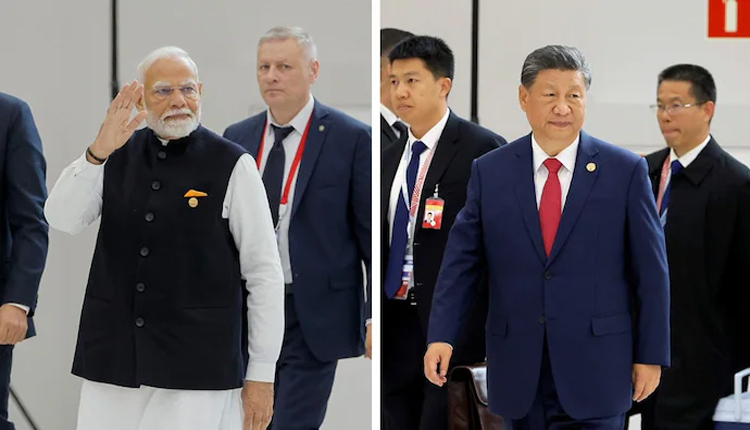Kazan: The much-needed diplomatic thaw has been observed in Indo-China relations as Prime Minister Narendra Modi is likely to meet Chinese President Xi Jinping, after a gap of five years this year in Kazan, Russia. The meeting that will take place today was preceded by numerous attempts by Russia to act as a mediator and re-establish communication between two Asian states, which proved to be hostile after the events that took place in the Galwan Valley back in 2020.
This top-level meeting was planned after intense diplomacy to ease tensions between the two nations with Russia acting as a mediator. Several issues are anticipated to feature in the meeting, especially the existing tensions on the India-China border.
Russia plays an important role in mediating the tensions between India and China It is of vital importance for Russia to resolve relations between India and China.
Since last few months, Russia has been actively involved behind the scene to help India and China to improve their diplomatic relations. As both countries hold important geopolitical positions in the region, Russia has urged its BRICS partners to restore relations, particularly after the June 2020 Galwan incident. The much-anticipated meeting has now been penciled to occur at the Kazan BRICS summit.
In discussions during the BRICS summits, Russia has urged the need to maintain peace between India and China for the stability of Asia. These efforts brought the Modi-Xi meeting today, which looks like the beginning of a new chapter of relations between the two countries.
After the Galwan meeting, India takes the lead
Since the Galwan Valley incident, there has been measured aggression in India’s foreign policy but not without sticking to strategic plans. Upon re-election, Prime Minister Narendra Modi expressed a readiness to continue and even deepen the communication with China, acknowledging the need to manage and sustain economic and strategic relations. Back in July, Indian External Affairs Minister S. Jaishankar met with Chinese Foreign Minister Wang Yi in Astana to prepare for today’s meeting.
Laos and Russia: Fruitful Negotiations and the Last Call
The first significant moment was in July when Indian and Chinese foreign ministers had a face-to-face meeting in Laos. It is important to note that both sides were unanimous that a Modi-Xi meet was necessary. This was further cemented in a crucial meeting that took place in Russia in September where National Security Advisor Ajit Doval and State Councillor Wang Yi hammered out the modalities for what is happening today. They both thought that now is the appropriate time for the leaders of the two countries to sit down and start translating words into actions.
China Sends Positive Signals
China posted a new ambassador to India in May 2024 as Xu Feihong who was quite an active diplomat on the matter and was instrumental in nurturing a positive environment. Xu went out of his way to state China’s willingness to better relations with India, thus paving the way for today’s historical summit.
India claims that 75 percent of the Border issues elapsed between both sides of the border have been solved.
S. Jaishankar, the Indian External Affairs minister later announced that over 75% of the border issues have been resolved which indicates a major leap. It assisted in establishing a favorable ground to continue the discussion and the expectation that the remaining problems can be resolved in a constructive fashion.
The clear message from NSA Doval to China / Carrots and sticks approach of the Indian government to China
During the meetings with China, NSA Ajit Doval ensured the latter that there will be no normalisation of relations unless peace and stability in the bordering regions are achieved. This clear position conveyed a clear signal, suggesting that India was ready to negotiate but not under any specific condition.
India has been a topic of positive coverage in china
Leading up to this meeting, state-owned media organizations in China shifted to a more favourable view of India, including acknowledgement of its growing economy and diplomacy. This change of tone has helped in improving on the general perception hence ushering in a new understanding thus paving way for cordiality.
Reducing Trade Barriers and Visa Requirements
Since the cordial reconciliation processes, both countries have made efforts towards reducing trade and visa barriers. These measures are considered as positive gestures towards opening up more and have contributed to enhancing cultural and economic cooperation.
As the world follows this monumental moment in the city of Kazan promising a new twist in bilateral relations, all attention is focused on the possible changes and trends in relations between India and China in the future. Will this meeting define the beginning of a new era in the relations between the two countries? Only time will tell.



Comments are closed.